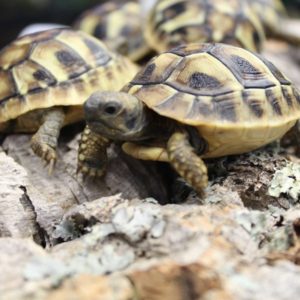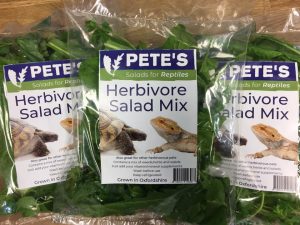Copyright 2021 Evolution Reptiles
All rights reserved.
Copyright 2025 Evolution Reptiles
All rights reserved.
All rights reserved.
The Hermann’s tortoise is one of the most popular species of Mediterranean tortoise in the pet trade, and rightly so; they are hardy and clever, full of personality and probably the best choice for our uncertain climate.

Found across the southern half of the Mediterranean basin, the Hermann’s is made up of three subspecies: Testudo hermanni hermanni,the Western Hermann’s, T. h. boettgeri, the Eastern (sometimes called the dwarf) Hermann’s, and T. h. hercegovinensis, the Dalmatian tortoise, found in Bosnia and Croatia. There is not a great deal to tell between the three, and it’s certain that many captive bred bloodlines are hybridised. Females tend to be a little larger than males, and generally have a carapace length of 13 to 20cm, although large females of the Western subspecies can reach 28cm.
The areas where they are found in the wild have mild winters, damp springs and autumns and hot, dry summers. Any hibernating that they do is of a short term duration, the length depending on where they live, and they will often aestivate to escape the hottest, driest part of the summer. The natural habitat of the Hermann’s tortoise includes Mediterranean evergreen and oak forests with arid, rocky hill slopes and scrubby vegetation, as well as herbaceous scrub and grassy hillsides.
Replicating this in captivity is certainly possible, although it can take some creativity in enclosure design. Tortoises are surprisingly active animals, and require more space than most other reptiles in order to thrive as well as correct levels of heat, light and UVB exposure. Any enclosure, indoors or out, needs to provide a heat gradient, a UV gradient, and even a humidity gradient. They need space to bask, space to burrow into their substrate, space to hide and space to roam; all this needs to be taken into consideration, and the answer to the question ‘how big should the enclosure be?’ is ‘big as you can and add a bit’.
Free roaming around the house or garden is good for exercise, but the area needs to be tortoise proofed – bearing in mind that all tortoises are excellent climbers and diggers – and of course they still need access to an area with appropriate levels of heat and light. Night time heating is unnecessary for indoor enclosures as long as the night time temperature remains above 15ºc, the same is true of outdoor housing. Most people bring their tortoises in at night, but it is possible to construct an outdoor sleeping house that is equipped with supplemental heat and, possibly, light.
For indoor accommodation a tortoise table is currently thought to be the best housing for your Hermann’s. This an open topped enclosure with lighting suspended over the top which provides an excellent temperature and UV gradient across the whole space. The walls should be high enough that, when filled with a soil based substrate to a reasonable depth, your tortoise cannot see over the sides, or climb over them. A mesh top is optional, but is always a good idea if there are small children or other pets in the house.
Diet is hugely important to get right. Whilst we can’t entirely replicate the wild diet of our tortoises, we can at least understand them and use that information to create a balanced diet. Wild tortoises have been recorded to eat 132 different plant species over a season; spring and autumn growth is green and abundant, whilst summer forage is dry and harsh. Dietary choices should be high in fibre, high in calcium and other minerals, low in protein, low in phosphorus and low in calories. In short, weeds! You can grow them or forage for them, but it’s vitally important to be as knowledgeable as possible on what is and what isn’t good for them. The best website available on tortoise feeding is www.thetortoisetable.org.uk – it’s in plain English and is very clear and user friendly. We are also available to help, as well as supplying fresh bags of weeds! We can even supply them by post.
Order Pete’s Herbivore Mix now!

Hermann’s do benefit from being hibernated, although this isn’t something that we would normally recommend until your tortoise is 400g or over. When it is time, contact us and we’ll explain the subject in detail – it’s a little long winded to include with the basics!
Don’t forget that all food should be dusted with a good calcium or multivitamin/multimineral powder.
Make sure that your tortoise is a true captive bred animal – they must have an article 10 certificate (sometimes called a licence, although it isn’t) which should specify the age, species and source of your new pet. If the plastron length (the shell underneath) is more than 6cm long, then the tortoise must be microchipped and the microchip number must be on the certificate. If a tortoise is offered for sale without any certification, then that is illegal! Make sure you stay on the right side of the law – illegal trafficking is only one of many problems these animals face in the wild, and it’s the one it’s easiest to do something about.
If in doubt, give us a call – we’re here to help!
Copyright 2021 Evolution Reptiles
All rights reserved.